A drainage easement on your property will limit any improvements you might want to do on it. It simply means the city can access your own property at any time without prior notice. If there are limitations on your property, could you build a fence on a drainage easement? We've extensively researched and found answers.
No, you cannot build a fence on a drainage easement. You can only make improvements that will not tamper with the water flow or block it. You are not allowed to have any temporary or permanent structures. But you will be compelled by the city to remove debris, build-up, or any naturally growing saplings that might block the water flow.
You might be surprised to learn that having a property with a drainage easement is not a walk in the park. Read on to find out what you are allowed to do on a property with a drainage easement.
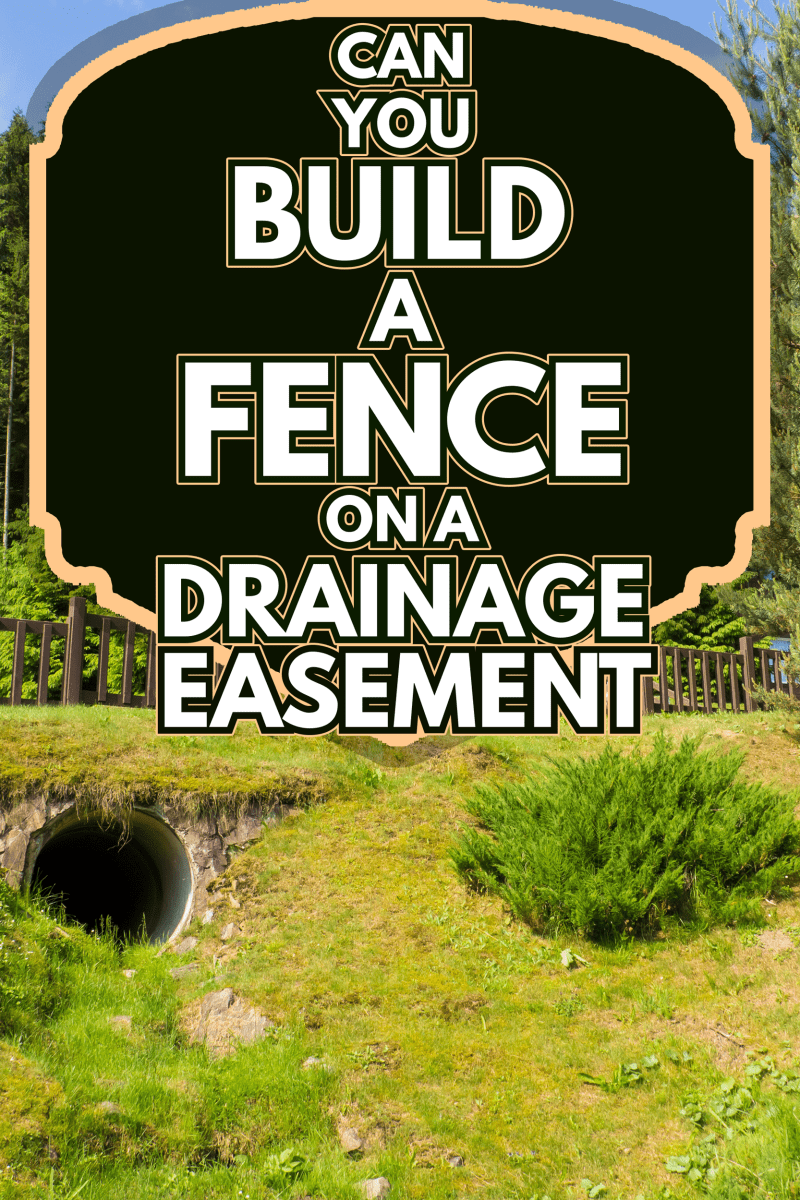
Building A Fence On A Drainage Easement
A drainage easement is an isolated piece of land for collecting or transporting water from neighboring plots via a designated infrastructure. There are policies as to where any form of fence can or cannot be erected on a drainage easement. City councils divide the policies into drainage and utility easements that:
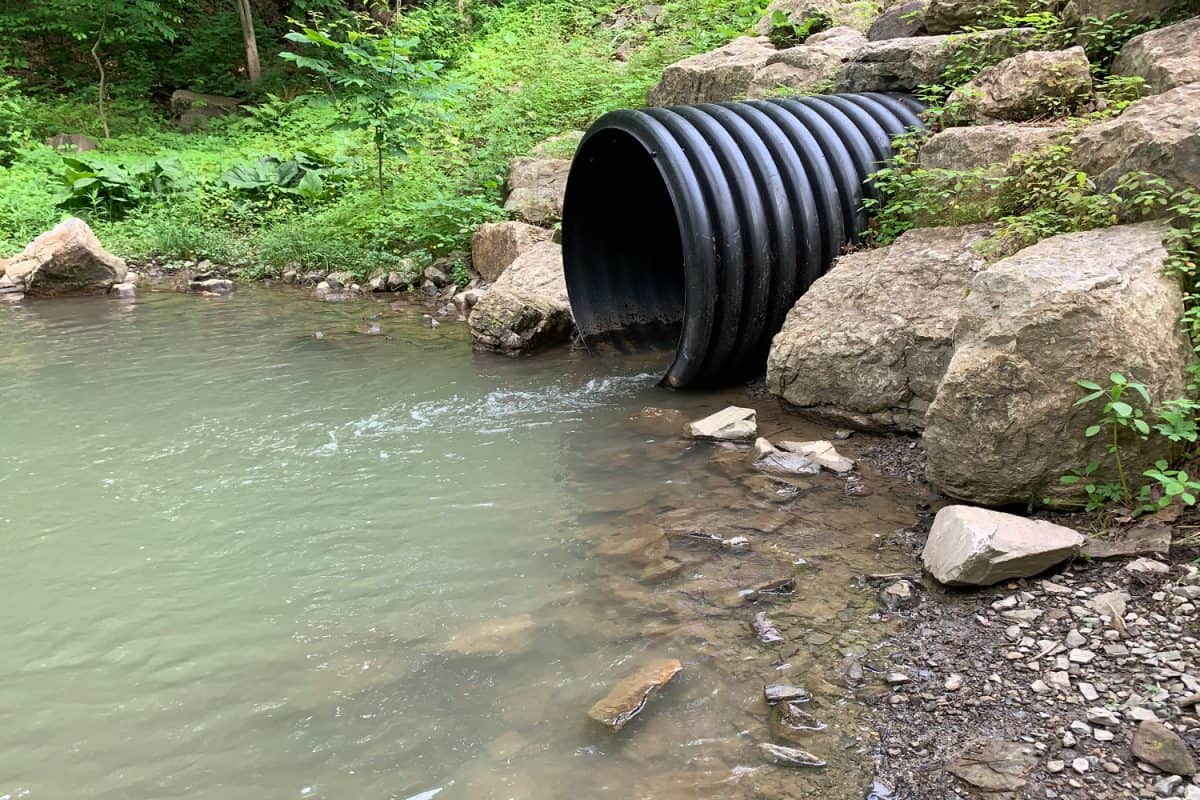
Contain Underground Sewers & Water Main Utilities
Homeowners cannot erect any fences, sheds, trees, large bushes, or elaborate landscaping on the easement property with underground sanitary sewers, storm sewers, or water main utilities.
The city council does not allow anything that might block access or interfere with the water drainage. You might be allowed to have small gardens, small bushes, or low landscaping. The homeowner's improvements should not in any way hinder inspection of the easement.
Serve As Ponding Basins
Ponding basins collect water to stop it from flooding the whole neighborhood. Private fences, landscape walls, trees, or bushes are not permitted within easements that serve as ponding basins. Any other vegetation around the ponding basin must be approved by the City Forester.
Fences that can be permitted should be 100-year high-water level for the pond. Other fences that can be allowed by the Public Works are those that restrict access to the ponding basin.
Don't Contain Watermain Utilities & Underground Sewers
Not all easements have underground sewers or water utilities. Drainage easements with nothing underground are easier to tackle.
The City Council will allow some improvements on the lots. Ensure that surface water drainage will not be obstructed by fences, trees, lawn irrigation schemes, or bushes.
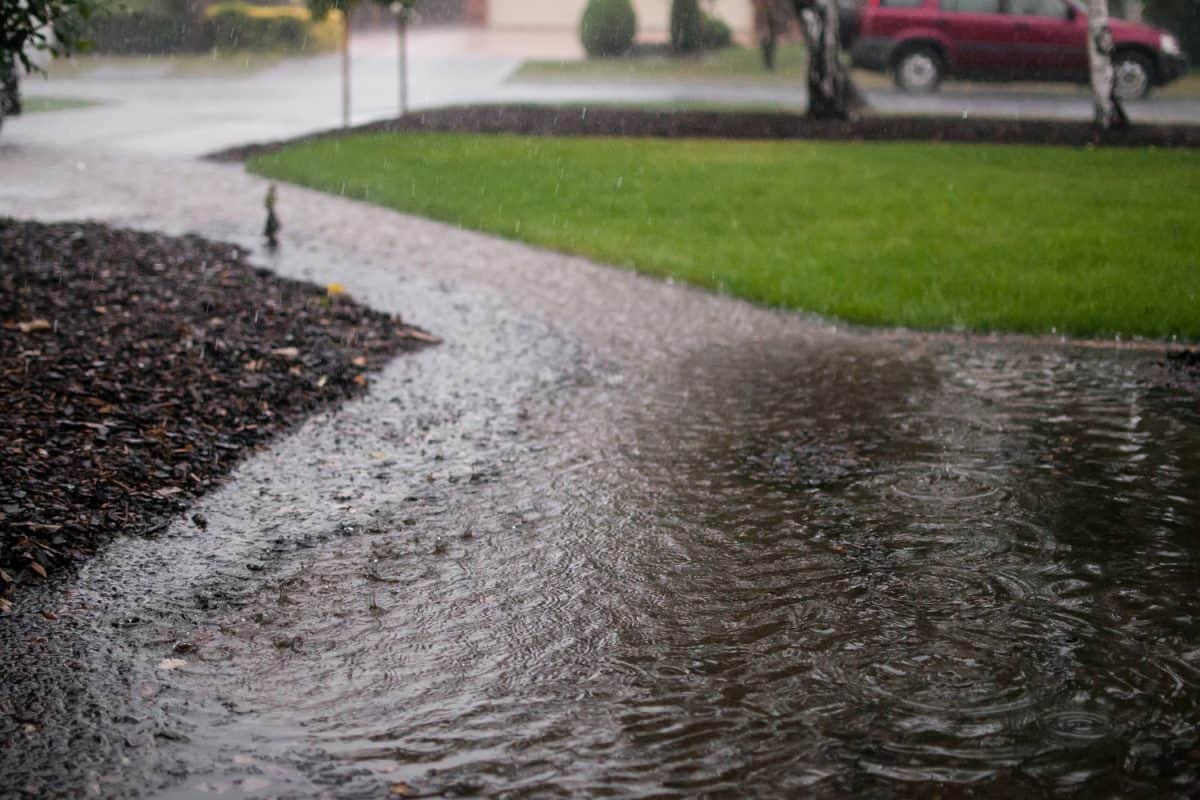
Drainage Easements Serving Multiple Lots
Some drainage and utility easements serve several lots, and sometimes the City Council can allow some sort of fencing or demarcation. However, the Council specifies the types of fences allowed for such easements.
Homeowners are not permitted to plant bushes, gardens, bare soil, or erect any temporary or permanent structures within the easement.
Types Of Fences Allowed On Drainage Easement
In most policies, privacy fences are allowed. But the council will specify what can be erected and where. It is not a case of one size fits all!
The types of fences you might see in some drainage and utility easements are:
Living fences
Living fences are allowed on drainage and utility easements that don't have underground water main utilities, storm sewers, or sanitary sewers.
You might find them on drainage easements that serve several lots. Property owners are not allowed to plant living fences too close to the centerline of the flow channel.
Split Rail Fences
You can erect a split rail fence because it doesn't have slats. Split rail fences are not deep, and they have a rugged look. These semi-permanent fences are easy to construct. They are well above the ground and allow water to flow without obstruction.
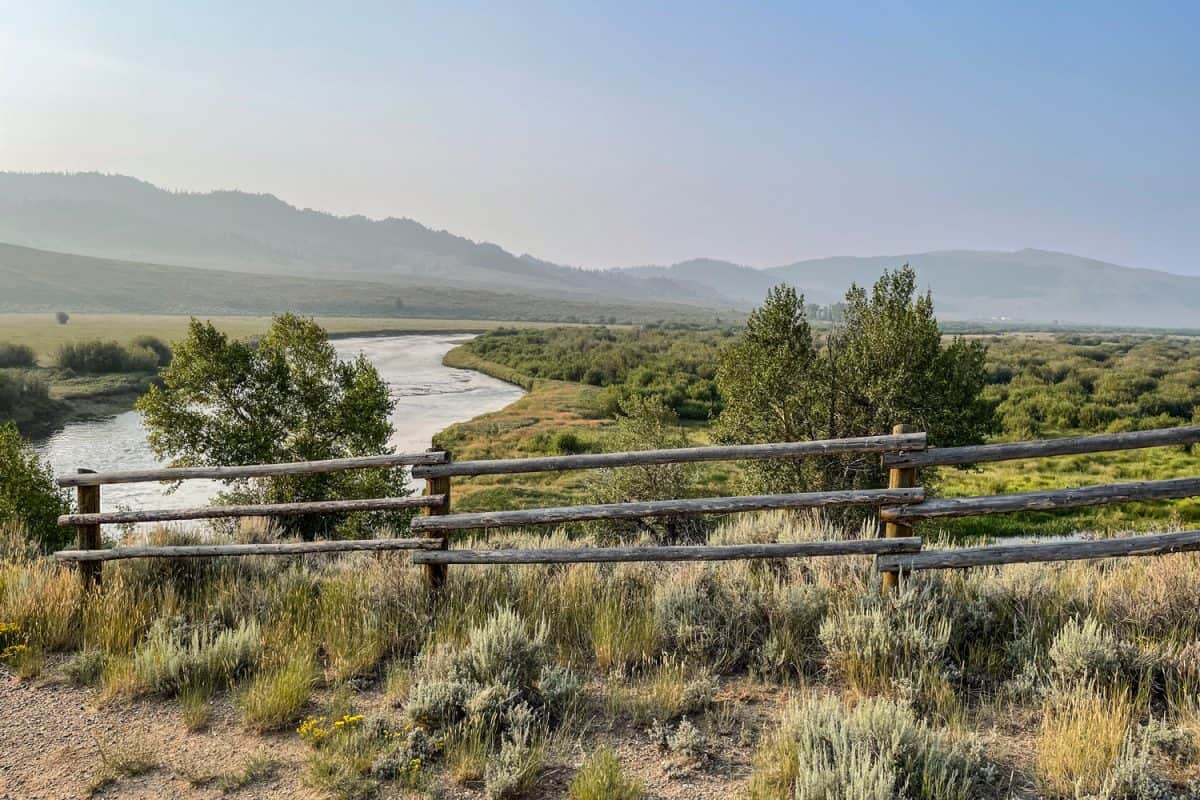
Chainlink Fences
The local authorities will allow property owners to erect a chainlink fence because it has visibility and can be quickly installed and dismantled.
Check out this walkthrough chainlink fence on Amazon.
The Public Works Department can allow sturdier fences in localities with minor water flows. However, the bottom of the fence should be constructed at least 12 inches above the ground.
Other Types Of Easements
An easement allows third parties access to your property without requesting permission on each occasion. Inquire from the local authorities or surveyors if the property you wish to purchase has an easement.
The information will help you make an informed decision. Here are other easements you might find attached to properties.
Utility Easements
The utility easement allows local utility entities to access storm drains, phone lines, sewers, and gas lines located on private property.
View Easements
Such an easement prohibits a property owner from building tall structures or planting tall trees that might block neighbors' views.
Way Through Easements
Some large lots could be sub-divided, and one of the owners might not have direct access to his property. The easement will allow the property owner to drive through his neighbor's property.
Dead-End Easements
Private properties located at a dead-end have easements to allow the public to access them.
Conservation Easements
Public parks and green belts bordering or alongside private properties are protected from any alterations by these easements.
Maintaining A Drainage Easement
The owner of a drainage easement is responsible for its maintenance. The maintenance tasks include:
- Clearing debris that could clog or slow the water flow.
- Routinely mowing the area.
- Proper management of any woody vegetation.
- Remove sediments that could divert the water flow.
- Water dentation basins also need to be routinely cleaned.
It might seem like a lot of work, but it's for the well-being of all sundry.
Check out this grass trimmer on Amazon.
Drainage Easement Landscaping
Drainage easement landscaping helps reduce excessive soil erosion in the area. The City Council will not allow any elaborate landscaping near a drainage easement.
Therefore, contact the local Extension Service office before you start any alterations. There are other ways to ensure the drainage easements on your property don't look hideous and still comply with the law.
You can plant thick grass, shrubbery, or deeply rooted ground covers that can help hold the soil. Alternatively, a swale can be created to quicken the water drainage on your property to the drainage easement.
Can A Drainage Easement Be Moved

No, it cannot. The drainage easement will remain on the land deed whether the property is sold, sub-leased, or transferred. In rare cases, it can be moved.
Drainage easements allow the municipality to work on the area quicker without seeking permission if it is on private property.
Do Drainage Easements Affect The Property Value
The location of the drainage easement will affect the value of the property value.
If the drainage easement is a small portion that sits near a water body where the water is drained, it won't devalue the property. However, if the property sits on relatively flat land and a big chunk is an easement, this will devalue the property.
Before you settle for any property you are interested in buying, you should:
- Invite a surveyor to find out the exact property lines.
- Find out if your property has any easements whatsoever.
- Assess how severe the drainage is.
- Find out if it will be possible to remove an easement.
- Inquire from the City Council if there is a possibility of a drainage easement passing through the lot in the future.
Although it might be fairly impossible to predict the exact outcome, it is good to have an understanding of the property you desire.
Bottomline
You cannot build any fences on a drainage easement. More importantly, you can't erect any permanent or temporary structures either.
If your property has a drainage easement, you must maintain it. A drainage easement is necessary for all lots involved to avoid flooding and ponding around the properties.
Here are more posts for your perusal:
Neighbor Connected To My Fence Without Permission-What To Do?



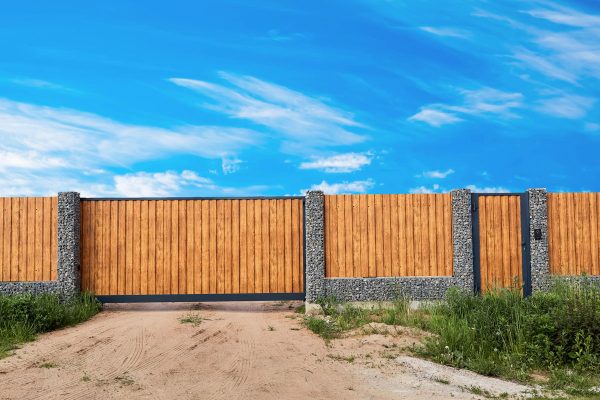
![Close board fence erected around a garden for privacy with wooden fencing panels, concrete posts and kickboards for added durability, Are Gravel Boards Treated? [And How Long Do They Last]](https://fencefixation.com/wp-content/uploads/2022/06/Close-board-fence-erected-around-a-garden-for-privacy-with-wooden-fencing-panels-concrete-posts-and-kickboards-for-added-durability-600x400.jpg)
![Wooden fence with green lawn and trees, Stepped Vs. Racked Fence Installation [Where & How To Use Each]](https://fencefixation.com/wp-content/uploads/2022/06/Wooden-fence-with-green-lawn-and-trees-600x400.jpg)